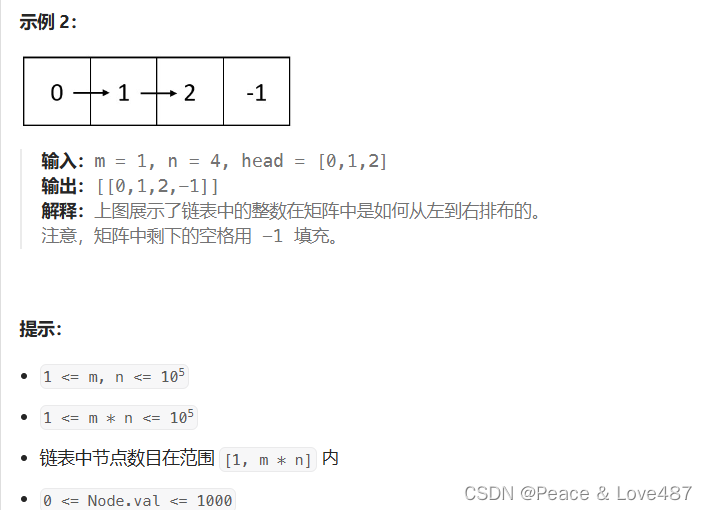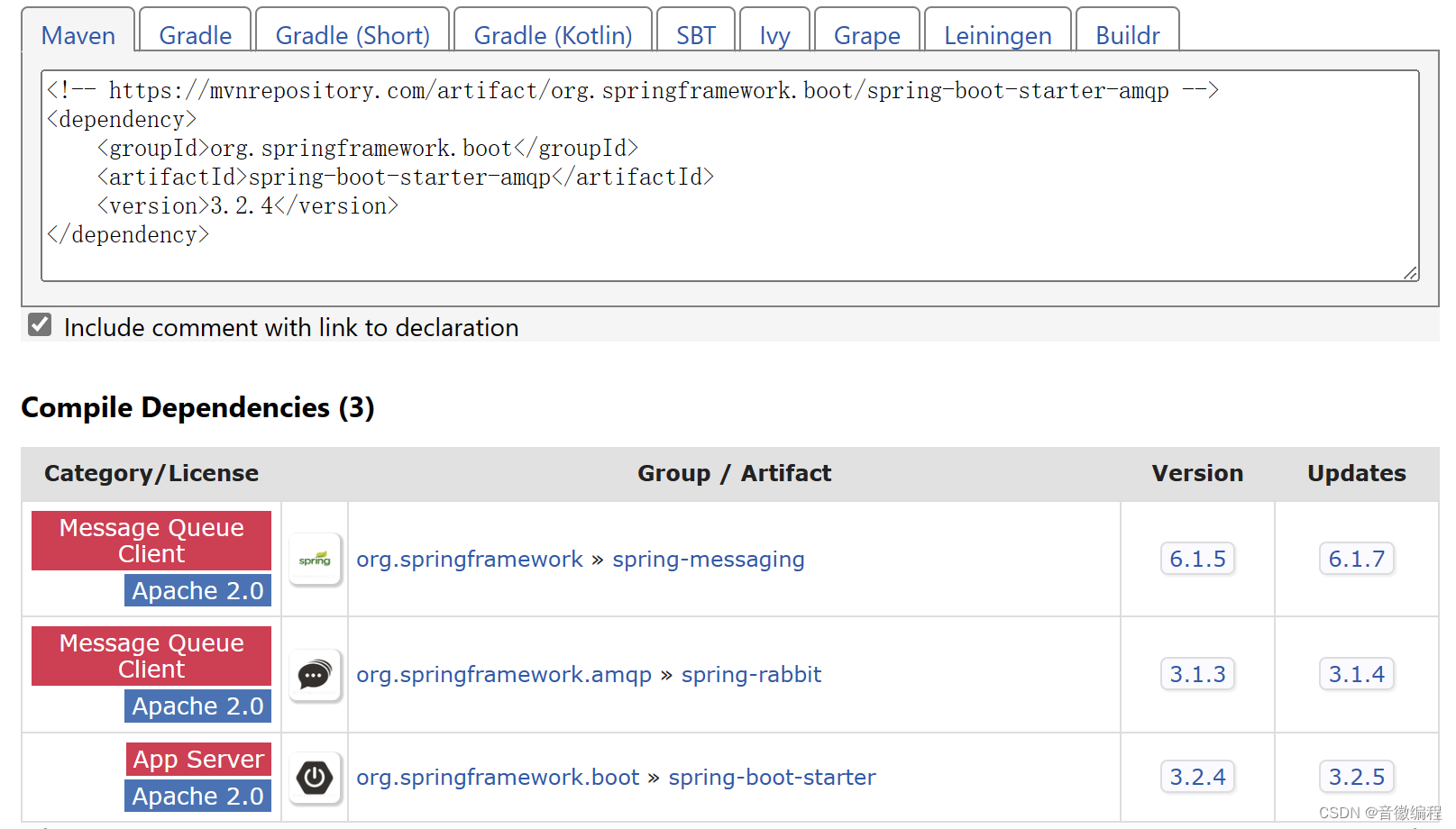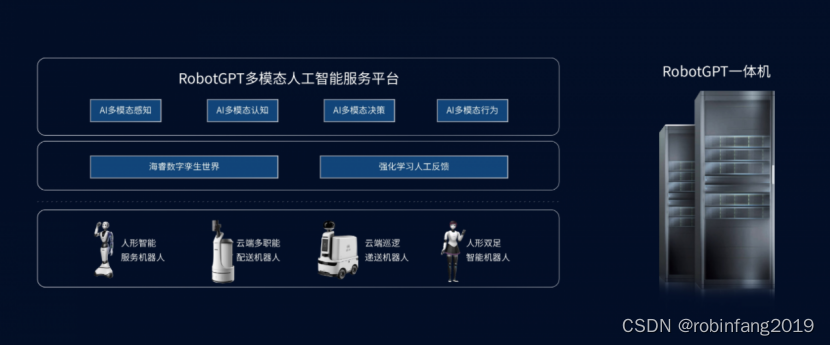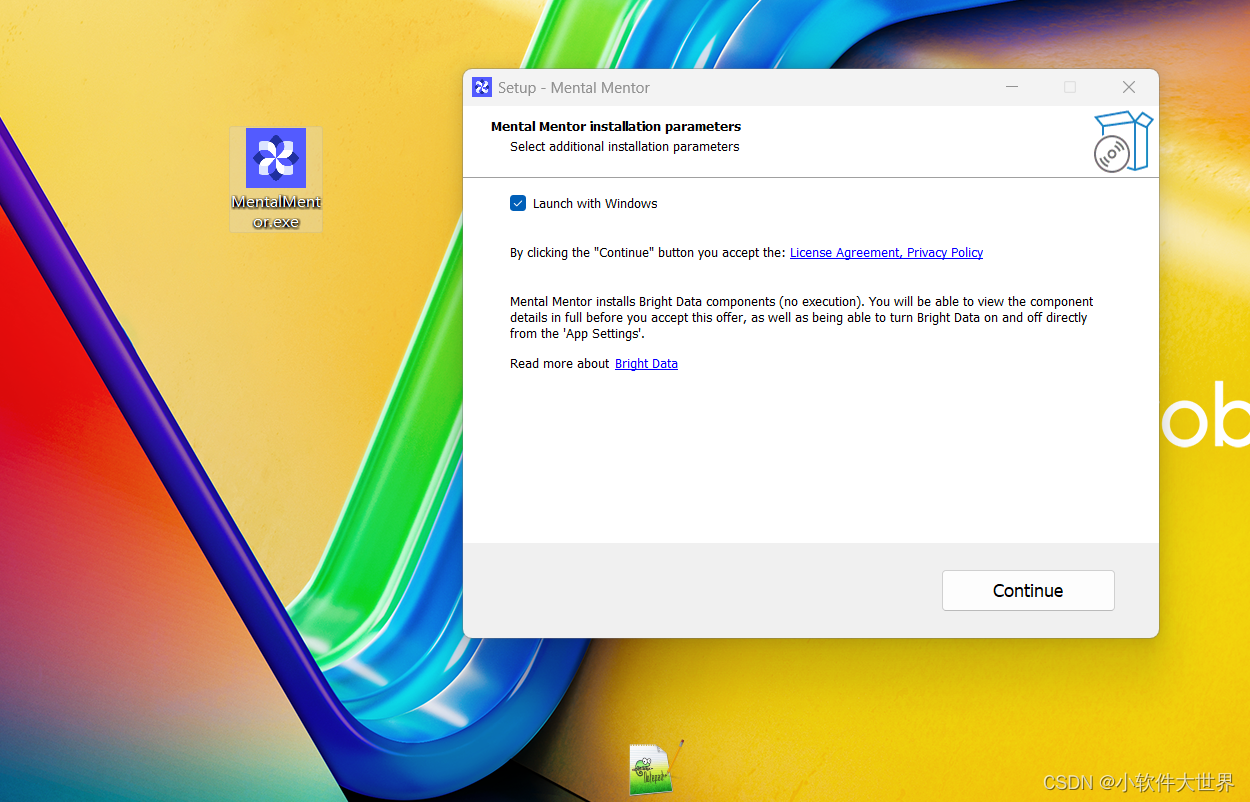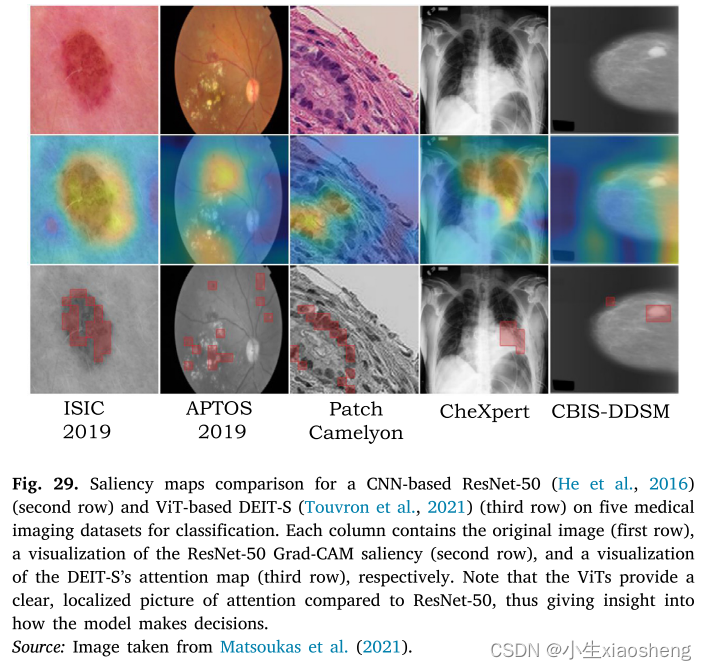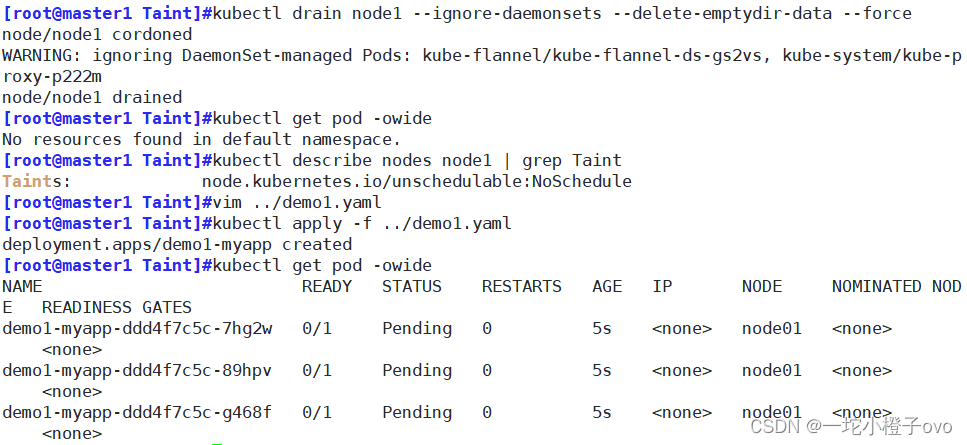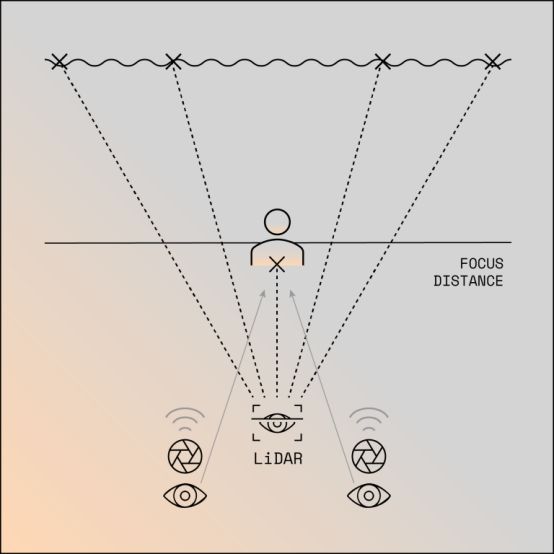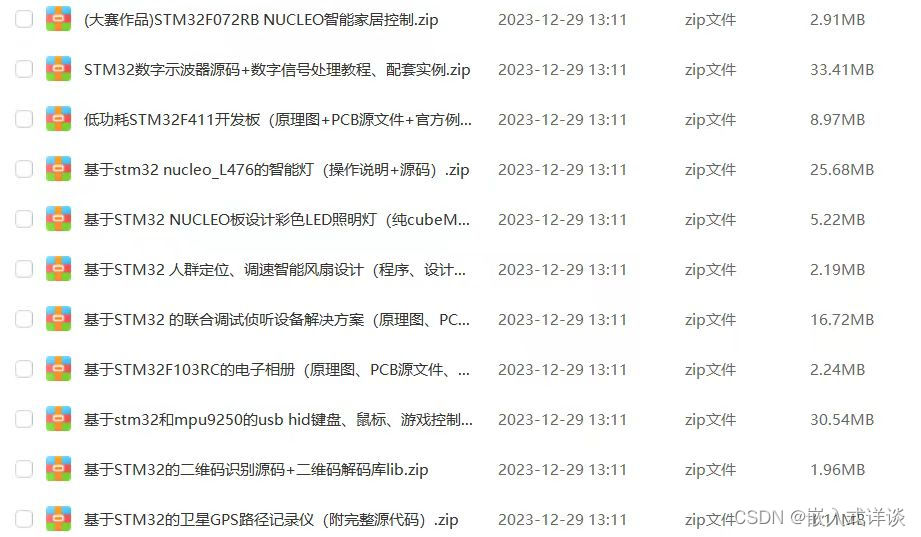前情提要
因工作需求,需要解析.SchDoc格式文件,提取文本和位置关系,通常方式是转换为图片或PDF,再进行OCR,但是这样识别精度太低了
Github找了好些项目,都不支持
PyAltium不支持
https://github.com/pluots/PyAltium
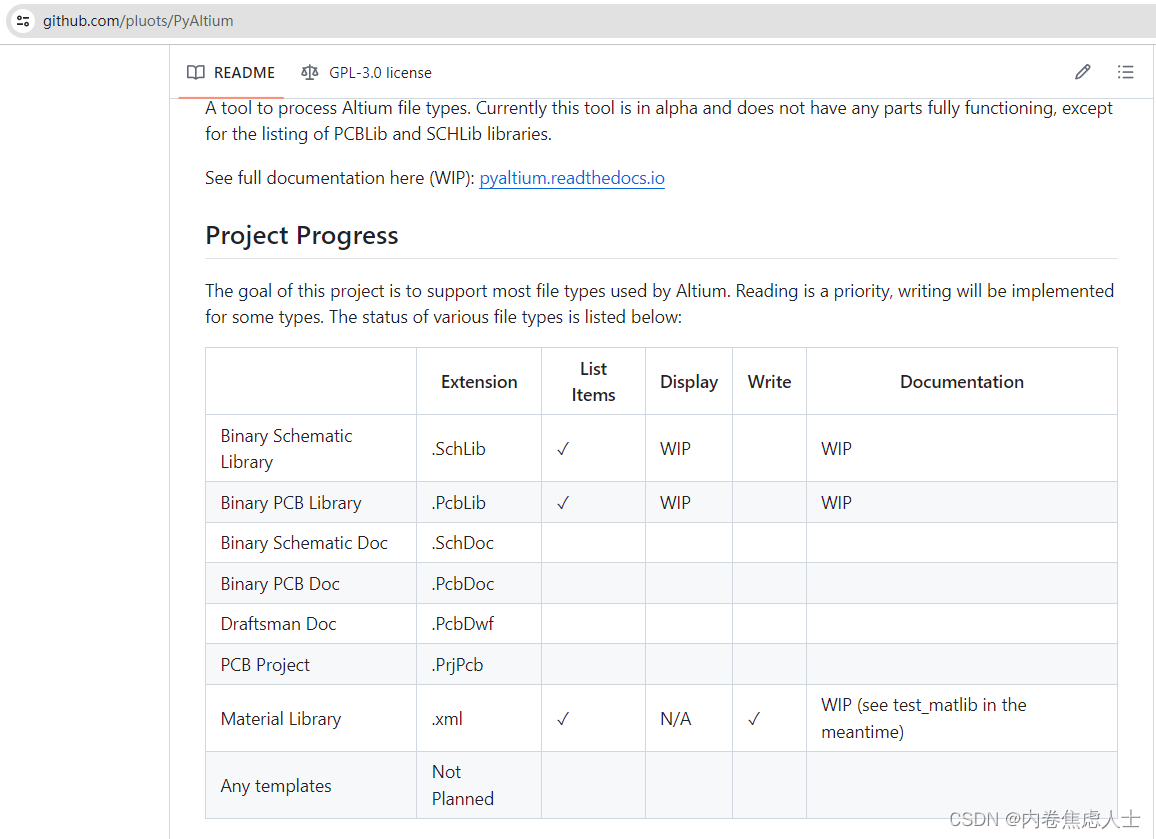
altium不支持python
https://github.com/pluots/altium
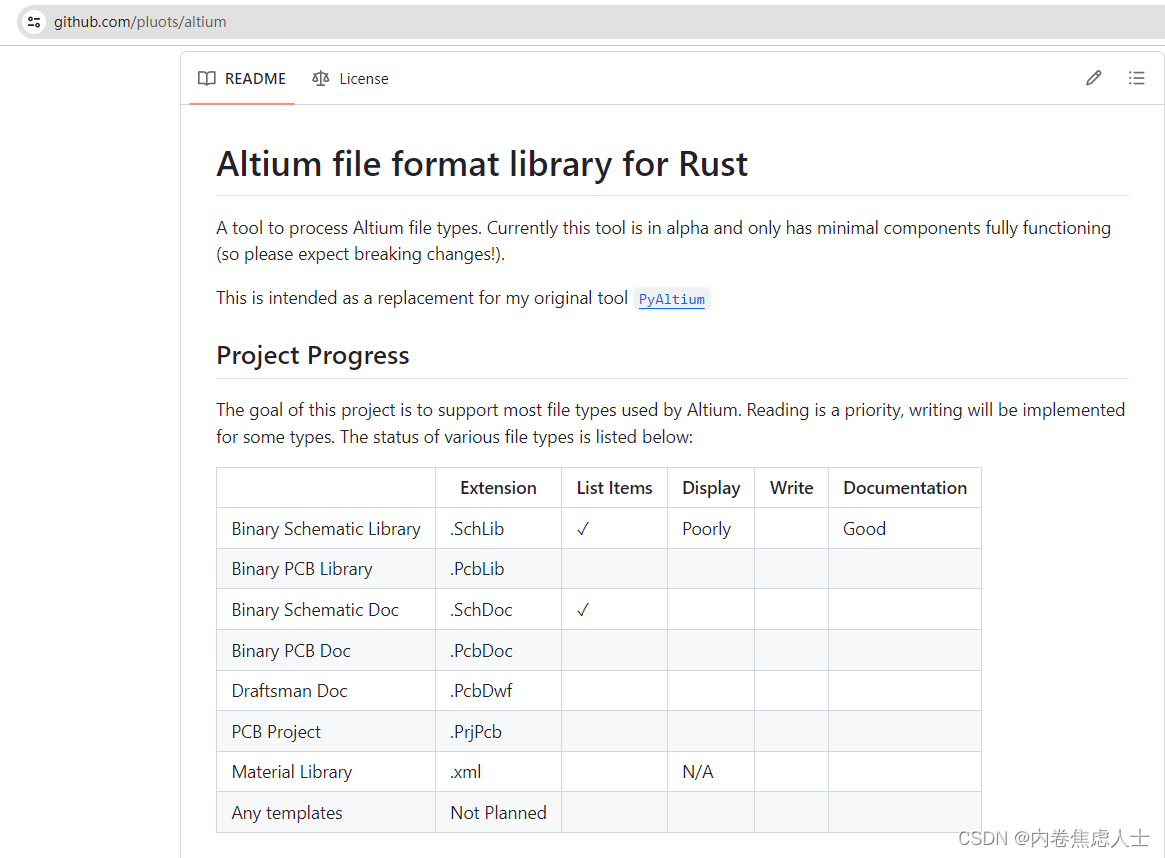
ChatGPT更是胡言乱语
这里就不放图片了
话不多说,上代码
改动自https://github.com/a3ng7n/Altium-Schematic-Parser
原项目直接运行会报错,而且没有支持中文
首先安装olefile
pip install olefile
改一下你的文件地址,然后运行以下代码
import argparse, textwrap
import olefile
import re
import json
import copy
import math
import logging
import os
import codecs
logging.basicConfig()
lg = logging.getLogger(__name__)
def parse(input, format, **kwargs):
fullPath = input
blah = olefile.OleFileIO(fullPath)
stream = blah.openstream('FileHeader')
# split binary stream into lines using a repeated 5 byte signature
pattern = re.compile(b'.{3}\x00\x00\|')
lines = pattern.split(stream.read()[5:-1]) # lopping off first 4 bytes, and last byte, since they don't seem to matter?
schematic = {}
datums = []
# loop through every "line" and parse each into a dictionary
for line in lines:
datum = {}
pairs = line.split(b"|")
for pair in pairs:
data = pair.split(b"=")
if len(data) == 2:
datum[data[0].decode()] = data[1].decode('utf-8', 'ignore')
datums.append(datum)
# separate out the header dictionary from the "records" dictionaries
schematic["header"] = [x for x in datums if 'HEADER' in x.keys()]
schematic["records"] = [x for x in datums if 'RECORD' in x.keys()]
hierarchy_schematic = determine_hierarchy(schematic)
if format == 'all_hierarchy':
schematic = hierarchy_schematic
elif format == 'parts_list':
schematic = determine_parts_list(hierarchy_schematic)
elif format == 'net_list':
schematic = determine_net_list(hierarchy_schematic)
return schematic
def determine_hierarchy(schematic):
"""Convert a dict containing a flat list of records
into a dict of records in a hierarchy
:param schematic: dict with 'header' and 'records' populated
:return: the input dict with 'records' assembled into parent/child hierarchy
"""
# prep a scratchpad copy of records to build hierarchy from
records_copy = copy.deepcopy(schematic["records"])
schematic["hierarchy"] = []
# loop through all "records" and organize them into owner/children
for i, current in enumerate(records_copy):
current['index'] = i
s = current.get("OWNERINDEX")
if s == None:
schematic["hierarchy"].append(current)
else:
ownerIndex = int(s)
owner = records_copy[ownerIndex]
if (owner.get("children") == None):
owner["children"] = []
owner["children"].append(current)
schematic["records"] = schematic["hierarchy"]
schematic.pop("hierarchy", None)
return schematic
def determine_parts_list(schematic):
parts_list = {
"records": [ record for record in schematic["records"] if record["RECORD"] == "1" ]
}
return parts_list
def determine_net_list(schematic):
_, wires = find_record(schematic, key="RECORD", value="27")
_, pins = find_record(schematic, key="RECORD", value="2")
_, labels = find_record(schematic, key="RECORD", value="25")
_, power_ports = find_record(schematic, key="RECORD", value="17")
devices = wires + pins + labels + power_ports
p = re.compile('^(?P<prefix>X)(?P<index>\d+)$')
for device in devices:
# if a Pin, do some fancy geometry math
if device["RECORD"] == "2":
rotation = (int(device["PINCONGLOMERATE"]) & 0x03) * 90
device['coords'] = [[
int(int(device['LOCATION.X']) + math.cos(rotation / 180 * math.pi) * int(device['PINLENGTH'])),
int(int(device['LOCATION.Y']) + math.sin(rotation / 180 * math.pi) * int(device['PINLENGTH']))
]]
# if a Wire, follow inconsistent location key names (X1 vs LOCATION.X, etc..)
elif device["RECORD"] == "27":
coord_name_matches = [x for x in [p.match(key) for key in device.keys()] if x]
device['coords'] = [ ( int(device['X' + match.group('index')]) , int(device['Y' + match.group('index')]) )
for match in coord_name_matches ]
# everything else, just convert the location values to ints
else:
device['coords'] = [(int(device['LOCATION.X']), int(device['LOCATION.Y']))]
nets = []
for device in devices:
if device["index"] not in [d['index'] for net in nets for d in net['devices']]:
net = {'name': None,
'devices': find_connected_wires(device, devices, [], schematic)}
nets.append(net)
for net in nets:
net['devices'].sort(key=lambda k: k['index'])
if not net['name']:
net['name'] = next(iter(d['TEXT'] for d in net['devices'] if ((d['RECORD'] == '17') or (d['RECORD'] == '25'))), None)
if not net['name']:
naming_pin = next(iter(d for d in net['devices'] if d['RECORD'] == '2'), None)
parent = next(iter(find_record(schematic, key="index", value=int(naming_pin['OWNERINDEX']))[1]), None) if naming_pin else None
net['name'] = next(iter('Net' + r['TEXT'] for r in parent['children'] if (r['RECORD'] == '34')), None) if parent else None
schematic["nets"] = nets
return schematic
def find_record(schematic, key, value, record=None, visited=None, found=None):
lg.debug("finding records where: {0} = {1}".format(key, value))
if visited == None:
visited = []
if found == None:
found = []
if record == None:
for record in schematic['records']:
visited, found = find_record(schematic, key, value, record=record, visited=visited, found=found)
else:
if record['index'] not in [r['index'] for r in visited]:
visited.append(record)
if key in record.keys():
if record[key] == value:
found.append(record)
if "children" in record.keys():
for child_record in record["children"]:
visited, found = find_record(schematic, key, value, record=child_record, visited=visited, found=found)
return visited, found
def find_connected_wires(wire, devices, visited, schematic):
neighbors = find_neighbors(wire, devices, schematic)
lg.debug('entering: {0}'.format(wire['index']))
if wire['index'] not in [w['index'] for w in visited]:
lg.debug('adding: {0} to {1}'.format(wire['index'], [w['index'] for w in visited]))
visited.append(wire)
for neighbor in neighbors:
lg.debug('trying: {0} of {1}'.format(neighbor['index'], [x['index'] for x in neighbors]))
visited = find_connected_wires(neighbor, devices, visited, schematic)
lg.debug('visited = {0}'.format([w['index'] for w in visited]))
else:
lg.debug('skipping: {0} already in list {1}'.format(wire['index'], [w['index'] for w in visited]))
lg.debug('returning: {0}'.format(wire['index']))
return visited
def find_neighbors(wire, devices, schematic):
all_wires = devices
other_wires = [record for record in all_wires if record != wire]
neighbors = []
for other_wire in other_wires:
if is_connected(wire, other_wire):
neighbors.append(other_wire)
return neighbors
def is_connected(wire_a, wire_b):
if wire_a["RECORD"] == "27":
a_line_segments = [(wire_a['coords'][i], wire_a['coords'][i + 1]) for i in
range(len(wire_a['coords']) - 1)]
else:
a_line_segments = [(wire_a['coords'][0], wire_a['coords'][0])]
if wire_b["RECORD"] == "27":
b_line_segments = [(wire_b['coords'][i], wire_b['coords'][i + 1]) for i in
range(len(wire_b['coords']) - 1)]
else:
b_line_segments = [(wire_b['coords'][0], wire_b['coords'][0])]
# check if any vertices in wire_a lie on wire_b
for vertex in [vx for line in a_line_segments for vx in line]:
for b_line in b_line_segments:
b_xs = sorted(list(zip(*b_line))[0])
b_ys = sorted(list(zip(*b_line))[1])
if ((min(b_xs) <= vertex[0] <= max(b_xs))
and (min(b_ys) <= vertex[1] <= max(b_ys))):
return True
# check if any vertices in wire_b lie on wire_a
for vertex in [vx for line in b_line_segments for vx in line]:
for a_line in a_line_segments:
a_xs = sorted(list(zip(*a_line))[0])
a_ys = sorted(list(zip(*a_line))[1])
if ((min(a_xs) <= vertex[0] <= max(a_xs))
and (min(a_ys) <= vertex[1] <= max(a_ys))):
return True
# check if both items are Power Ports with the same TEXT value
if ( wire_a["RECORD"] == "17" ) and ( wire_b["RECORD"] == "17" ) and ( wire_a["TEXT"] == wire_b["TEXT"] ):
return True
return False
def main(args):
schematic = parse(**vars(args))
if args.output:
json_file = open(output_folder, 'w', encoding='utf-8')
json.dump(schematic, json_file, indent=4, ensure_ascii=False)
else:
print(schematic)
if __name__ == "__main__":
# 命令行使用方式
# parser = argparse.ArgumentParser(description='转换.SchDoc文件转换为json', formatter_class=argparse.RawTextHelpFormatter)
# parser.add_argument('input',
# help='path/to/altiumschematic.schdoc 要分析的文件地址')
# parser.add_argument('-o', '--output', dest='output',
# help='path/to/jsonfile.json 输出json到的文件,否则打印到终端')
# parser.add_argument('-f', '--format', dest='format', default='all_hierarchy',
# choices=['all_list', 'all_hierarchy', 'parts_list', 'net_list'],
# help=textwrap.dedent('''\
# all-list: 展开列表中的所有记录
# all-hierarchy: 在所有者和子结构中的所有记录
# parts-list: 零件及其代号的列表
# net-list: 零件引脚之间的网络列表,由其代号表示'''))
# args = parser.parse_args()
# main(args)
# 直接调用函数使用方式
SchDoc_path = "/home/hyh/data/Maintenance_test_data/AIN.SchDoc"
format = "all_hierarchy"
output_folder = os.path.join(os.path.dirname(SchDoc_path), os.path.basename(SchDoc_path).split(".")[0] + "_" + format + ".json")
schematic = parse(SchDoc_path, format)
json_file = open(output_folder, 'w', encoding='utf-8')
json.dump(schematic, json_file, indent=4, ensure_ascii=False)
赞!赞!赞!
